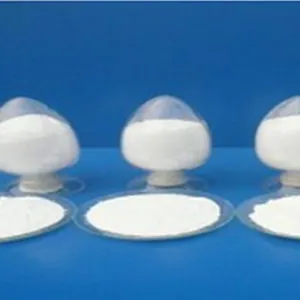
The Impact of Bread Preservatives on Freshness and Health Concerns
The Importance of Bread Preservatives Enhancing Freshness and Shelf Life
Bread, one of the oldest and most commonly consumed staple foods, is a beloved item in many households around the globe. However, one of the biggest challenges faced by bread manufacturers and consumers alike is maintaining the freshness and preventing spoilage. This is where bread preservatives come into play. They are essential in extending the shelf life of bread, ensuring that it remains safe, palatable, and nutritious for a longer period.
Bread preservatives serve various functions, including inhibiting the growth of mold, reducing staleness, and preventing spoilage caused by bacteria. In the absence of preservatives, bread can go stale or moldy within a few days, especially in humid environments. This not only leads to food waste but can also have economic implications, as consumers are unlikely to purchase products that spoil quickly. As such, the use of preservatives is vital in the commercial baking industry.
Commonly used bread preservatives include calcium propionate, sorbic acid, and ascorbic acid. Calcium propionate is particularly effective in inhibiting the growth of mold and some bacteria, making it a favored choice in many bread recipes. Sorbic acid, on the other hand, is a versatile compound that works well in a variety of baked goods to prevent mold and yeast growth. Ascorbic acid, a form of Vitamin C, not only acts as a preservative but also strengthens the dough, enhancing the bread’s texture and volume.
bread preservatives

The inclusion of preservatives in bread products has raised questions regarding health and safety. Many consumers are becoming increasingly aware of the ingredients in their food and are seeking products that are free from artificial additives. This has led to a growing trend towards clean label products, which often prioritize natural ingredients and preservatives. Manufacturers are now exploring alternative methods, such as the use of natural preservatives like vinegar or rosemary extract, to meet consumer demands while still maintaining product safety and quality.
It is essential for both producers and consumers to understand that the goal of using preservatives is not to encourage unhealthy eating habits, but rather to reduce food waste and enhance food safety. Properly preserved bread can last longer without compromising on taste or nutritional value, allowing consumers to enjoy their favorite products without the constant worry of spoilage.
In conclusion, bread preservatives play a crucial role in the baking industry, ensuring that bread remains fresh, safe, and enjoyable to eat. As consumer preferences continue to shift towards more natural options, the industry will need to adapt by finding innovative ways to balance the demand for freshness with the desire for clean ingredients. Ultimately, the effective use of preservatives not only benefits manufacturers by reducing waste and cost but also enhances the overall experience for consumers, allowing everyone to enjoy bread that is both delicious and sustainable.
-
Why Glacial Acetic Acid Food Grade Is Essential in FlavorNewsMay.26,2025
-
Surging Export Growth of Food Additives in ChinaNewsMay.26,2025
-
How Ammonium Nitrate Fertilizer Boosts Crop YieldsNewsMay.26,2025
-
How 1,2,3-Benzotriazole Shields Plastics from UV DegradationNewsMay.26,2025
-
Cyanide in Gold Mining: Protecting People and the PlanetNewsMay.26,2025
-
Aluminum Hydroxide in Modern Sunscreen FormulationsNewsMay.26,2025
-
Understanding Synthetic Rubber OptionsNewsApr.27,2025
Hebei Tenger Chemical Technology Co., Ltd. focuses on the chemical industry and is committed to the export service of chemical raw materials.
-

view more DiethanolisopropanolamineIn the ever-growing field of chemical solutions, diethanolisopropanolamine (DEIPA) stands out as a versatile and important compound. Due to its unique chemical structure and properties, DEIPA is of interest to various industries including construction, personal care, and agriculture. -

view more TriisopropanolamineTriisopropanolamine (TIPA) alkanol amine substance, is a kind of alcohol amine compound with amino and alcohol hydroxyl, and because of its molecules contains both amino and hydroxyl. -

view more Tetramethyl Thiuram DisulfideTetramethyl thiuram disulfide, also known as TMTD, is a white to light-yellow powder with a distinct sulfur-like odor. It is soluble in organic solvents such as benzene, acetone, and ethyl acetate, making it highly versatile for use in different formulations. TMTD is known for its excellent vulcanization acceleration properties, which makes it a key ingredient in the production of rubber products. Additionally, it acts as an effective fungicide and bactericide, making it valuable in agricultural applications. Its high purity and stability ensure consistent performance, making it a preferred choice for manufacturers across various industries.











